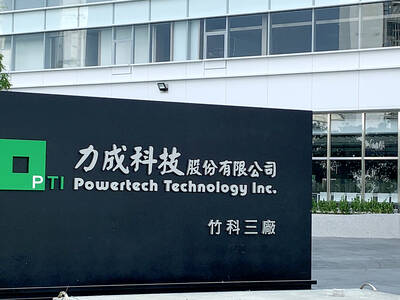AU Optronics Corp (友達光電) yesterday said it planned to form a US$16 million LCD TV module assembly venture in Brazil with TPV Technology Ltd (冠捷科技), paving the way for its foray into another fast-growing BRIC country following its moves into China.
BRIC refers to Brazil, Russia, India and China.
The joint venture with Hong Kong-listed TPV would be the Taiwanese panel maker’s first production base in Latin America, through which it hopes to provide just-in-time services and customer support, AU Optronics said in a statement.
The proposal was still awaiting approval from regulators, the Hsinchu-based company said.
SECOND VENTURE
The Brazilian plant would be AU Optronics’ second TV module venture with TPV after their US$40 million venture in Gorzow, Poland, which opened in March.
AU Optronics and TPV would own 19 percent and 81 percent of the Brazilian venture respectively.
“The joint venture will provide TV panel modules to TPV and other global TV brands in Brazil,” AU Optronics spokesperson Hsiao Yawen (蕭雅文) said by telephone yesterday.
The joint venture will be set up in a special economic zone in Manaus, Brazil, where it can enjoy tariff exemptions, Hsiao said.
TPV, which sells own-brand TVs under the AOC brand, is the fourth-largest TV maker in Brazil, with 10 percent of the market.
AU Optronics is eyeing the strong growth potential of the flat-panel TV market in Brazil, where cathode-ray tube TVs still account for about half of the TV market.
FUTURE SALES
LCD TV sales are expected to get a further boost when Brazil hosts the 2014 FIFA World Cup and 2016 Olympic Games, the Hsinchu-based firm said in its statement.

The DBS Foundation yesterday announced the launch of two flagship programs, “Silver Motion” and “Happier Caregiver, Healthier Seniors,” in partnership with CCILU Ltd, Hondao Senior Citizens’ Welfare Foundation and the Garden of Hope Foundation to help Taiwan face the challenges of a rapidly aging population. The foundation said it would invest S$4.91 million (US$3.8 million) over three years to foster inclusion and resilience in an aging society. “Aging may bring challenges, but it also brings opportunities. With many Asian markets rapidly becoming super-aged, the DBS Foundation is working with a regional ecosystem of like-minded partners across the private, public and people sectors

BREAKTHROUGH TECH: Powertech expects its fan-out PLP system to become mainstream, saying it can offer three-times greater production throughput Chip packaging service provider Powertech Technology Inc (力成科技) plans to more than double its capital expenditures next year to more than NT$40 billion (US$1.31 billion) as demand for its new panel-level packaging (PLP) technology, primarily used in chips for artificial intelligence (AI) applications, has greatly exceeded what it can supply. A significant portion of the budget, about US$1 billion, would be earmarked for fan-out PLP technology, Powertech told investors yesterday. Its heavy investment in fan-out PLP technology over the past 10 years is expected to bear fruit in 2027 after the technology enters volume production, it said, adding that the tech would

YEAR-END BOOST: The holiday shopping season in the US and Europe, combined with rising demand for AI applications, is expected to drive exports to a new high, the NDC said Taiwan’s business climate monitor improved last month, transitioning from steady growth for the first time in five months, as robust global demand for artificial intelligence (AI) products and new iPhone shipments boosted exports and corporate sales, the National Development Council (NDC) said yesterday. The council uses a five-color system to measure the nation’s economic state, with “green” indicating steady growth, “red” suggesting a boom and “blue” reflecting a recession. “Yellow-red” and “yellow-blue” suggest a transition to a stronger or weaker condition. The total score of the monitor’s composite index rose to 35 points from a revised 31 in August, ending a four-month

RUN IT BACK: A succesful first project working with hyperscalers to design chips encouraged MediaTek to start a second project, aiming to hit stride in 2028 MediaTek Inc (聯發科), the world’s biggest smartphone chip supplier, yesterday said it is engaging a second hyperscaler to help design artificial intelligence (AI) accelerators used in data centers following a similar project expected to generate revenue streams soon. The first AI accelerator project is to bring in US$1 billion revenue next year and several billion US dollars more in 2027, MediaTek chief executive officer Rick Tsai (蔡力行) told a virtual investor conference yesterday. The second AI accelerator project is expected to contribute to revenue beginning in 2028, Tsai said. MediaTek yesterday raised its revenue forecast for the global AI accelerator used